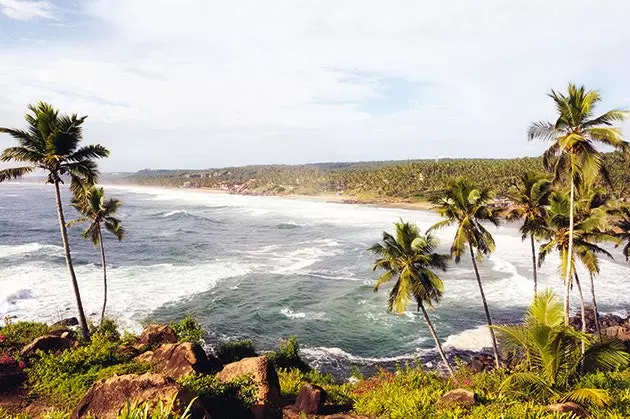
Kerala: the tranquil tropics
It is a land accustomed to receiving foreigners, where everyone is welcome. Chinese merchants, Portuguese and Dutch sailors or British colonizers have left their bit of culture here . Perhaps it is that amalgamation of influences, framed by sensual tropical vegetation, that makes everyone feel at ease.
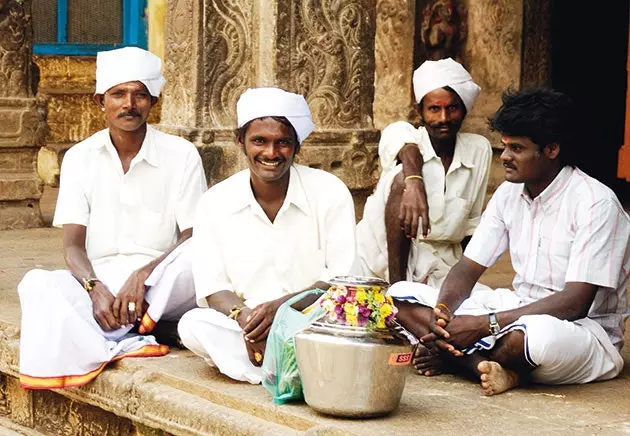
A land accustomed to receiving foreigners
Fort Kochi is not the capital of Kerala, it is just a part of a big metropolis , Kochi, and the most attractive point to start this journey through the most romantic side of the Indian subcontinent. of a peninsula that separates, or joins, depending on how you look at it, the sea from the backwaters, the kilometer-long network of freshwater canals that form the most widespread image of what Kerala offers to lovers. Dozens of historic buildings, churches, mosques, palaces and merchant mansions They appear scattered through the streets of this little paradise, ideal for enjoying a walk in the shade of specimens of magnolia or banyan (bayan tree) of spectacular size.
The sunset is the most magical moment, when the sun goes into the sea while the fishermen they collect the photogenic Chinese cantilever nets, an artisanal fishing method now only seen in Kerala. Until a few years ago, it was believed that Chinese travelers brought it, but it is more likely that it was the Portuguese who settled in Macao who brought this ingenious system to the landscape of southern India. The 20-meter nets go in and out of the water at high tide, at sunrise and sunset, thanks to the brute force of the sailors and a rudimentary system of pulleys, bamboo trunks and the huge stones that stand in for them. counterweight. The result of so much effort is a scant catch that is sold directly on Fort Kochi's bustling waterfront to anyone, including tourists, who are offered the chance to taste the stewed goods at one of the nearby restaurants.
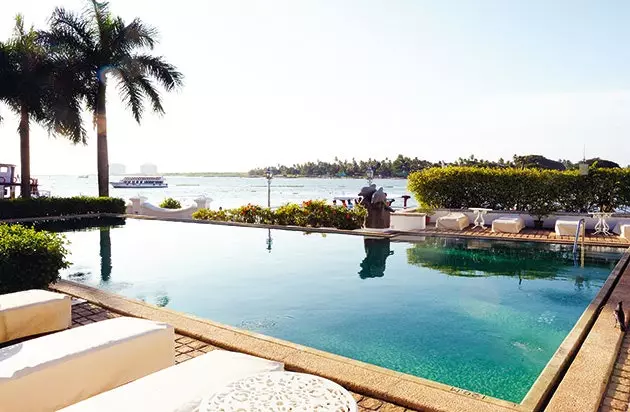
Infinity pool at Brunton boatyard hotel
In this city you must visit the vestiges of the Portuguese colonial era , beginning, for example, with the Indo-Portuguese Museum, located in the residence of the bishop of one of the first Catholic dioceses in Asia. Around this place are the most important historical monuments from the time of Portuguese rule: the Basilica of Santa Cruz; the church of San Francisco, where the navigator Vasco de Gama, who died here in 1524, was buried; or the Dutch cemetery, a semi-abandoned place next to the most beautiful beach in the city , where mystery and poetry are entangled in the tombstones and mausoleums of unknown sailors and soldiers from the Netherlands, the next nation to control this port, famous throughout the world for being the gateway for precious spices.
Asian life is enjoyed by touring Bazaar Road, the street that follows the waterfront to the Jewish quarter , where you must visit the 16th century synagogue, decorated with oriental tiles and the Mattancherry Palace, also known as the Dutch Palace. This is the place to see the hustle and bustle of the merchants and also to buy spices and condiments that wrap flavor and color even the most insipid of stews: chili peppers, saffron, natural oils extracted from flowers, vanilla and very especially delicious teas, from all varieties and aromas imaginable. Some of the best hotels in Fort Kochi are concentrated on the left side of this lively artery, while on the left small mosques and colonial houses of wood and stone painted in pastel colors alternate . Among them, Caza Maria, a restaurant where they serve delicious homemade local cuisine.
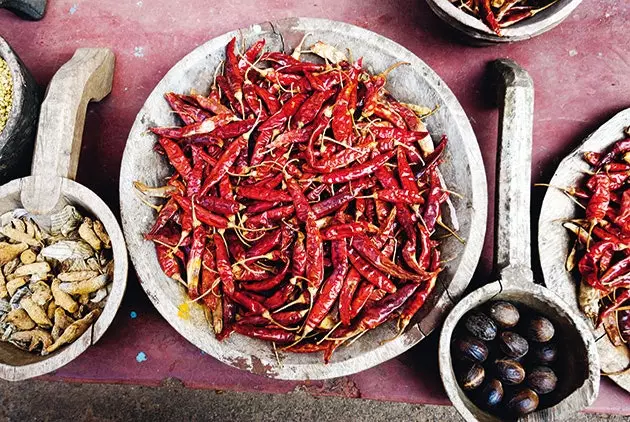
typical spices
TROPICAL ROMANCE
From here on there is no excuse not to embark on a boathouse, hotel barges also known as kettuballam . Before carrying couples in love, kettuballam were the traditional method used to transport goods, mainly rice, through the backwaters of Kerala. They come in all sizes and categories: from simple boats for two with a captain and a cook as the only crew to true floating palaces, capable of accommodating entire families and with a uniformed service to the nines that serves Indian haute cuisine dishes. .
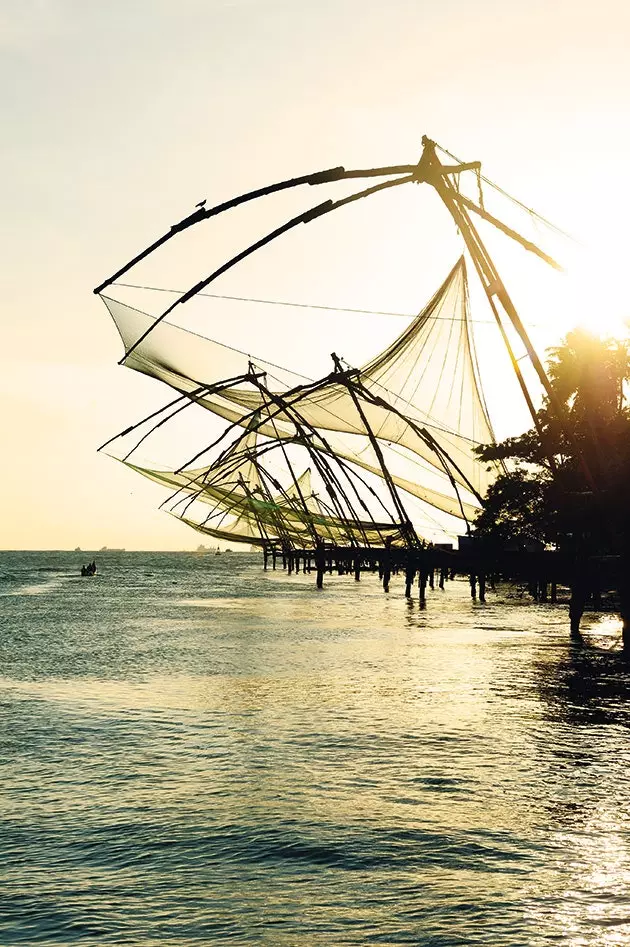
Chinese net boats
What is the same for all are the wonderful landscapes that are discovered in the tangled network of canals of fresh water Life is done on the covered terrace. It is from there where you can enjoy the daily routine, which passes in front of the sight of the lucky passengers who have nothing better to do than observe and be pampered. On the banks, among exuberant vegetation, you can see small villages of simple houses painted in bright colors , groups of children on their way back or on their way to school, following the paths that border these islands that seem to float in so much water, or women doing the laundry or taking a refreshing bath without having to take off their sari, traditional clothing that Indian women wear. refuse to forget despite the modernization of the country. There are also churches with an eclectic aesthetic, brick meringues in which an ancestral Christianity is practiced, the one preached by the Apostle Thomas in the 3rd century and whose rites are today part of the Syrian Orthodox Church.
On the water, the traffic of barges and canoes does not stop. There's always one in the distance, whether it's a fancy boathouse, a fishing canoe, or a ferry loaded with women running errands. At sunset, the boat is moored to the shore and takes the opportunity to go around the mainland, discovering the narrow channels that run through the islets through which only the smallest boats are able to pass. Behind the thick coconut palms hide the rice fields , perfect crop in this land so generous in water. For dinner, the menu is made with fresh produce, caught the same day by the locals, who await the arrival of tourists in their tin huts with the seafood alive and kicking.
BEACH AND MOUNTAIN
The Malabar Coast, as this strip of tropical paradise is called, offers its best face in the south of Kerala, between Verkala and Kovalam, two cities with a beach spirit and a good range of luxury resorts where you can pamper yourself for a few days or receive some ayurvedic treatment. After the break, it is time to head north again and enter the Western Ghats, the 1,600 km long mountain range that separates the country in two , from the northern state of Gujerat to Cape Comorin, the northernmost point of the Indian peninsula.
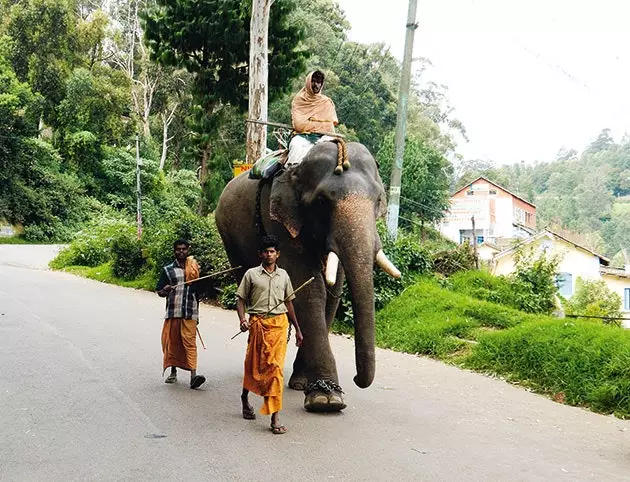
Kerala is one of the few Indian areas where Asian elephants live
In these mountains you must visit the Periyar National Park, a wildlife sanctuary where you can see specimens of tigers and elephants, which share territory with 62 other species of mammals and up to 167 types of butterflies. The safari is done by boat on the artificial lake, where all the wild inhabitants of Periyar come to drink water and take a dip. The best time of year to visit the park is the period between September and May.
Following the line traced by the Western Ghats to the north, you reach Munnar, a mountain station that allows you to discover an unknown and unprecedented India, mountainous and wild, a universe touched by a permanent fog. Coolness, humidity and altitude are given here, three ideal factors for the plantation of the star product of India, tea. Huge extensions of crops of this shrub cover the entire surface of the generous land of Munnar creating a soft natural carpet in a striking green tone from which the silhouettes of the collectors emerge, dressed in their brightly colored saris: a perfect image to close this travel through a country that makes even the hardest hearts fall in love.
